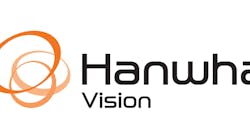Editor’s note: This is part one in a two-part series on video surveillance trends from the perspective of several industry experts. Part one examines overall industry trends, the continued migration to IP and how companies are continuing to provide support to the large existing base of analog device users. Part two will delve into the progression of high-resolution imaging technology, developments at the edge and the future of video recording.
Over the past decade, there has been a seismic shift in the evolution of video surveillance. What was once a relatively simple configuration of coaxial cable running from cameras to closed circuit television monitors and VCRs has been revolutionized by network connectivity and ever-increasing image processing power.
The result has been the transformation of what once considered a “dumb” security sensor into an “intelligent” device that provides security managers with actionable data they can use to mitigate risks and more thoroughly investigate incidents after the fact. This is embodied in the multitude of video analytic capabilities offered by today’s video products at both the software and hardware levels. It can also be seen in the wide variety of high-resolution cameras that are currently available in the marketplace.
Despite these technological advances and the tipping point for IP video equipment sales (at least in terms of revenues) being close at hand, the fact remains that analog still makes up the majority of camera installations and will remain a large part of the market for the foreseeable future.
With that being said, what does the future hold for both IP and analog devices? SIW caught up several industry experts on hand at the ASIS conference this week in Chicago to get their take on these and other market trends.
SIW: What is the biggest trend you're seeing currently in the video surveillance market?
Fredrik Nilsson, general manager, Axis Communications: If you look at some of the recent market research, and I don’t think that anyone has any doubt… that IP is the future and that’s the only way to go, I think in the latest IHS research they say, ‘hey it’s tipping over, half of the market is IP, this is the way to go and now there is no doubt’ and so forth. And that’s all fine, fair and correct, but if you actually analyze the numbers a little bit further, it’s half of the revenue in the video business that’s IP video. But if you look at the number of cameras being installed, IHS claims that there are a little over two million IP cameras being installed this year and that’s probably correct, but there’s still six million analog cameras being installed. Of course, they are less revenue per unit, that’s why the IP market is as big as analog, but if you look at the number of channels being installed, still 75 percent is analog and I think that’s pretty true. All of those cameras will be operational, not for one or two years, but more likely for five to 10 years.
We still see huge potential in video encoders and we’ve had a big product revamp of the whole portfolio over the last week or two that we’re going to showcase at ASIS. There are many different ways you can differentiate yourself with an encoder but one thing is price and the price per channel to make it competitive with DVRs. I think the solution is really with SD cards or bundled with other software, that’s really come down in price and I think that’s going to be an important category for many years to come and we want to show that we believe it’s important and a good transitional technology over to IP.
Frank De Fina, senior vice president of sales, North America, Samsung Techwin America: There’s little doubt that the migration to IP systems continues to be the most prevalent trend in the professional security industry. And it’s about time, as networked systems are all the rage for B2B business solutions, the broadcast industry, as well as consumer electronics – all of which are influencers in the development of innovative technologies that can be adapted for pro security applications. Mobile video is a perfect example. End users demand for mobile access to IP camera systems and control software continues to be an outgrowth of networked systems’ capabilities. At Samsung, we have all the pieces in place to fulfill users’ demands for increased mobility while remaining focused on our core objective of delivering the systems products that combine both the highest levels of performance and value, which fulfills both security and business/financial objectives in today’s market.
Gadi Piran, president of OnSSI: In addition to the global trend towards implementing video surveillance and security solutions on a networked IP platform, the demand for mobility continues to be a growing trend. New mobility solutions that offer real-time streaming of live and recorded video provided by VMS solutions like Ocularis increase overall situational awareness, improve response times and work towards achieving the ultimate goal of incident prevention. In tandem with the demand for increased mobility, users are also trending towards higher resolution imaging from megapixel cameras. As systems become more complex, open architecture is enabling more integration between and among devices. And with the large installed base of legacy systems in current use, analog users are looking for more high performance hybrid appliances that enable them to improve situational awareness as they navigate what can be a costly upgrade from analog to IP infrastructure. Also aiding the migration process is the recent proliferation of coax to Ethernet technologies which allow existing legacy infrastructure to support IP appliances. For example, Ocularis Hybrid Recorders provide a cost-effective solution for connecting analog cameras to our Ocularis VMS. The savings in hardware are complemented by additional cost-efficiencies that will result from better detection, alerting and event handling capabilities. These are all exciting developments that will continue to facilitate the accelerated deployment of better, more advanced video surveillance and security solutions.
Wendi Burke, director of marketing, IQinVision: The biggest trend in the past six to 12 months has been the deeper integration (and mergers) between video surveillance and other industry sectors such as access control. This deeper integration has resulted in the need for more processing power and technology at the camera.
Scott Schafer, executive vice president, Arecont Vision: The trend towards deploying megapixel imaging solutions has gained traction globally for numerous reasons with performance and cost-efficiency being the primary drivers. There’s no doubt that today’s advanced megapixel cameras deliver superior image quality with better ROI and lower TCO (total cost of ownership) than conventional IP and analog cameras. In addition to increasing coverage capabilities with better resolution, megapixel cameras enable more sophisticated video analytics which also supports the use of more advanced VMS solutions.
The development of new and better megapixel technologies all have to do with the recent increase in demand for megapixel cameras. Enhancements like wide dynamic range (WDR) which produces better images where highly contrasted lighting exists, true day/night functionality with dual sensor cameras and panoramic cameras are prime examples. Multi-sensor panoramic cameras in particular are now leading the charge as they provide better coverage over large areas with fewer cameras. Instead of receiving images that are diffused on the edges by fish eye lenses on single sensor panoramic cameras, multi-sensor panoramic cameras deliver a high quality image across the entire180- or 360-degree scene. And because most leading VMS and NVR (companies) charge only one license fee for all four sensors, it is a terrific value to customers. Another main advantage of multi-sensor panoramic cameras is that they provide excellent situational awareness for security operators who are watching parking lots, receiving docks or building lobbies. Users around the world continue to recognize these advantages which continue to increase the installed base of these devices.
Dave Poulin, director business operations, security and evidence management solutions, Panasonic: High-definition image quality is by far the biggest trend we’ve seen and it is redefining the way our customers are planning to deploy and upgrade their security systems. HD imagery is making it possible for security professionals to improve their situational awareness by capturing additional facial details, symbols, textures and other critical information with unprecedented precision and clarity. As the demand for higher megapixels and resolution has grown, we have continued to invest heavily in R&D projects focused on newer camera features and technologies designed to respond to this demand and provide our customers with the crisp, crystal-clear images that separate our security and video surveillance solutions from other manufacturers.
Courtney Dillon Pedersen, communications manager, Milestone Systems: Mobile access and sharing video between different locations and disparate entities is gaining wide interest these days. Especially in the education sector where budgets can be limited, we recognize the need for schools and local law enforcement to work together as closely as possible to improve the safety of students and staff. To help unite these two entities, we began an initiative this year called Secure Our Children. We aim to empower educational institutes with the ability to capture and share video using Milestone Mobile and Video Push to give local law enforcement access to surveillance from the schools, allowing them to take timely action when necessary. We give one free channel license per building and it’s also free to install the XProtect Web Client or Milestone Mobile client.
George Maroussis, manager, Genetec Technology Alliance: The cloud and video surveillance-as-a-service (VSaaS) offerings which provide a unified platform that enhance operator responses to events, increased situational awareness and focused response from multiple sub-systems, threat level management and customized applications.
SIW: How do you continue to balance the continued push for IP while maintaining the balance necessary to support the existing large install base of analog technology?
Nilsson: Any customer who says they’re going to install a hundred new cameras, we have some analog what should we do? Of course, our integrator partners would prefer to sell them IP cameras because one, it’s more future proof, and it’s more revenue for them and hopefully provides for a happier customer. But I think it’s important to remember that the encoders are there and there are a lot of customers that need life of the analog system - whether they need to upgrade the DVR because it’s failing or it doesn’t have the capacity. It’s on those installations that we’re trying to educate people. It’s not really taking business from the IP camera side, but rather the DVR business. Instead of people, by habit, either walking into a store or ordering online gets another DVR to replace the failing one, we really want them to consider the encoder. It’s open, it’s more flexible and it positions you for the time you need to upgrade to network cameras. It comes with quite some education and we have to do it internally as well to make sure that our sales people present it in the right way.
De Fina: The large installed base of analog systems using legacy coax infrastructure still represents a considerable percentage of all video surveillance systems currently in place. We are supporting these users with new analog and HD products that will seamlessly integrate into their existing systems architecture, and we are providing them with feasible means of enhancing their analog systems with hybrid IP cameras and recorders so they can migrate to an IP platform at their own pace. Plus, there are new Ethernet/coax adapters available from several manufacturers that are easing the migration as well. This is an important transitional phase that will take years to play out as the costs associated with replacing legacy systems are often prohibitive.
Piran: The demand and implementation of hybrid devices allow the large base of analog users to introduce more advanced IP cameras and control solutions like Ocularis into their system architecture. We see this as an important transitional solution that helps protect users’ investments in leading edge technologies while allowing them to migrate to a networked platform at their own speed.
Burke: We have very little call to support analog technology today. For those who have requirements for such technology, such as casinos and smaller retail chains, we continue to provide select IP camera models with full-time analog out as an option.
Shafer: There are numerous ways in which the migration from analog to IP systems is being dealt with for pro surveillance applications – specifically the use of legacy infrastructure to support IP and megapixel cameras. One specific and most cost-efficient way to preserve legacy infrastructure without any compromise in performance is through the use of Ethernet-over-Coax adapters which are now also available with PoE capabilities. These simple and relatively inexpensive devices allow users to enhance their current analog systems and coax infrastructure with the latest IP devices and software. Our concentration has always been and remains to develop and manufacture the best megapixel imaging solutions available. Products like Ethernet-over-Coax adapters further support our continued concentration on megapixel imaging solutions.
Poulin: We understand that one system can’t fit the needs of all users, and the transition from an existing analog installation to a comprehensive IP video surveillance system doesn’t happen overnight. We continue to bring new, innovative analog cameras to market to serve our significant analog customer base while also meeting the growing customer demand for IP. Panasonic works with its customers to develop hybrid video surveillance solutions that allow them to take advantage of the benefits newer systems provide while maximizing their investments in analog technology and minimizing the costs associated with a complete system overhaul. The improved ease-of-use and lower cost of entry offered by hybrid systems provide users with the opportunity to adopt more advanced IP technologies and scale their systems more efficiently.
Pedersen: Our new Milestone Husky Series of NVR appliances is one way that we are addressing the traditional security market’s needs for simpler digital solutions through these ready-to-use offerings. The high-performance hardware is pre-installed and pre-configured with our reliable VMS. And for those wanting to choose their own hardware, our October releases of the XProtect Professional family of products are specially designed to make it easier than ever to purchase, configure, install, maintain, upgrade and migrate to our video management software. Features such as automatic camera discovery and automatic video configuration with wizards help to remove complexity, especially for anyone without advanced IT skills. Milestone software supports not only the widest choice in IP cameras, but connection to analog devices through video encoders, too. Moving from analog to IP - whether all at once or gradually - in order to get the most out of older equipment is now easier than ever.
Maroussis: Supporting software that enables legacy devices to transition to IP, as well as legacy functions in IP (VMS) software such as virtual matrix, analog legacy keyboard support and PTZ protocol translations in an IP/video software streaming model.






